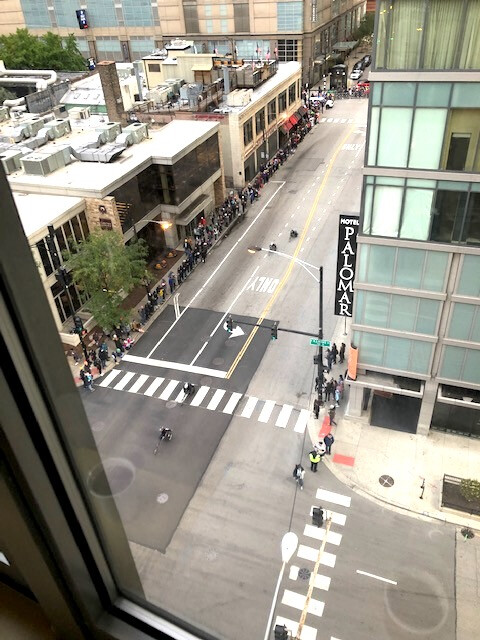Almost a century ago, the future Archbishop of Canterbury, Michael Ramsey, wrote his influential The Gospel and the Catholic Church. He aimed to reconcile the evangelical and catholic impulses in the Church by arguing that the apostolic structures of the Church, and in particular orders, existed to express the Gospel itself and to invite us to respond to Christ’s saving death with lives of self-surrender. This intention to think these two impulses together goes to the heart of what it means to be an Anglican, and it has a special importance to those who walk the ‘Canterbury Trail’ from the evangelical world to our tradition.
I believe that a similar effort is required today. One form of it might be liturgical. We live in the era of the triumph of the Eucharist in parish practice. Historically there has been a debate about the nature of the event, and in particular the nature of the presence of Christ in it. Like all such debates we do well to revive them and engage them, since this enables us to better understand what we are doing. But in this entry I want to explicate the Communion or Eucharist or Mass in a different way, one that may be friendly to an evangelical sensibility. It will also make central the doctrine whose renewal is crucial to our Church’s life, namely the Atonement of Jesus. Finally it may have value in making this sacrament comprehensible to a generation for whom spirituality has been a catchword.
What is it we want as human beings? We want to get home. We want to find our way to the Father. We want what St Paul in Romans 6:1 calls ‘access.’ We want to have a share in the mystery, what it is all about. We want to overcome the barriers which evil, tragedy, and death pose, both around us and in us. And that is exactly what Communion acts out, in symbol and ritual form. It is a journey into the sanctum sanctorum, the secret heart of the inner castle, the cosmic temple, the center of all things. To get from the door, to the altar, the throne- that is what Eucharist is about, because that is what life is about.
Remember the Temple, how it had a court of the Gentiles, and then inner ground where only Israel could enter, and then only priests, and finally only the high priest could enter. Hebrews tells us there is only one sacrifice, already accomplished, through whose veil we are invited. I Peter tells us that we are by its power now made a new people of God and a nation of priests. Our sacrifice of praise and thanksgiving, in the words of our prayer book, is now to be offered there by us through Him.
At the offertory we sing the Sanctus, because we are invited into the heavenly realm, that of angels, though Isaiah ‘s words remind us that we have no right of our own accord to be there, nor power to intrude ourselves there. We are invited, called from the four winds, in the wake of His resurrection. So the very pinnacle of the sacrament is our saying His prayer to His Father, borrowing that intimacy, escorted into the Presence, allowed to say ‘Abba,' ‘Father’ (Romans 8).
Once we see this, the rest falls into place. The readings and sermon describe the road, and the temple old and new, and the longing, and the roadblocks. The bread and wine are fused with the promise of the invitation itself. The dismissal reminds us that the sanctum is in us, corporately, individually, though he suffused to cosmos, as our Lutheran colleagues would remind us.
Invitation into the sanctum of the Father through the death of Jesus that breaks down the dividing wall (Ephesians 2): that is a description catholic and evangelical, and maybe even searcher, can own. And that means that every Eucharist you attend is a mystical journey home, hidden under ordinary things, as Christ’s incarnate presence was itself. There is no end to how deeply we can plunge into this reality.
Nowadays one hears lots of comparisons between the situation of the Church now and in the first centuries AD. The comparison has a real but limited usefulness. But we can profit by thinking about how new Christians were formed, by God’s grace, in that era. The moral demands of the faith were conveyed, as were the basics of the Creed. But instruction did not end with baptism. Afterwards, the instruction, called ‘mystagogy,’ ‘being led into the mysterious things,’ i.e. the sacraments, commenced. Christians were enabled to connect the down-to-earth facts of this new life of theirs with its inner representation in the Eucharist. What I am suggesting is a form of mystagogy for a spiritually hungry generation. This Sunday what will really happen is that you will be led home and greeted by your Father, the same thing you are doing Monday through Saturday, the same thing that will occur on the day that our life ends.
(Login/Register to leave a comment)



